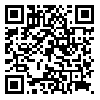BibTeX | RIS | EndNote | Medlars | ProCite | Reference Manager | RefWorks
Send citation to:
URL: http://hakim.tums.ac.ir/article-1-2300-en.html

 , Hassan Niroomand sadabad2
, Hassan Niroomand sadabad2 
 , Abolfazl Marvi3
, Abolfazl Marvi3 
 , Alireza Ramzi4
, Alireza Ramzi4 
 , Ali Vafaee Najjar *
, Ali Vafaee Najjar * 
 5
5
2- PhD Student in Healthcare Services Management, Department of Health Management and Economics, School of Public Health, Mashhad University of Medical Sciences, Mashhad, Iran. & Health Management Expert, Social Security Organization, Mashhad, Iran.
3- PhD Student in Healthcare Services Management, Department of Health Management and Economics, School of Public Health, Mashhad University of Medical Sciences, Mashhad, Iran.
4- MD, Health Insurance Research Unit Expert, National Health Insurance Research Center, Health Insurance Administration of Khorasan Razavi Province, Mashhad, Iran.
5- PhD in Healthcare Services Management, Professor, Department of Health Management and Economics, School of Public Health, Mashhad University of Medical Sciences, Mashhad, Iran. ,
Introduction: Appropriate and honest communication and respect for personal and professional values are necessary for optimal patient care. This study aimed to evaluating the level of responsiveness and explaining the challenges in service delivery and presenting solutions in the teaching hospitals affiliated with Mashhad University of Medical Sciences.
methods: This mixed-methods study was carried out in the teaching hospitals at Mashhad University of Medical Sciences in 2022. In the quantitative phase, Patients who covered by Iran Health Insurance Organization were selected using a simple random sampling method. The data were collected using a standard questionnaire (WHO responsiveness questionnaire). the qualitative phase conducted using qualitative content analysis method. The participants (patients and hospital managers) were selected with purposive sampling method. Semi-structured in-depth interviews were employed as a data collection method. The SPSS and Maxqda software were used to analyze quantitative and qualitative data respectively.
Results: In the quantitative phase, the highest mean score among the dimensions of responsiveness was related to communication and patient dignity and the lowest was related to social support and confidentiality of information and choice. The relationship between responsiveness dimensions and education level was significant only in independence dimension (p<0.007). In the qualitative phase, the challenges of related to responsiveness were categorized into seven themes including managerial, cultural, functional, information, evaluation, participatory, and infrastructure.
Conclusion: Thus, setting goals and planning, the establishment of responsiveness units in hospitals, training managers, staff and patients and inter-departmental coordination can help improve responsiveness in teaching hospitals.
Received: 2025/04/6 | Accepted: 2023/06/19 | Published: 2023/06/19
| Rights and permissions | |
 |
This work is licensed under a Creative Commons Attribution-NonCommercial 4.0 International License. |
